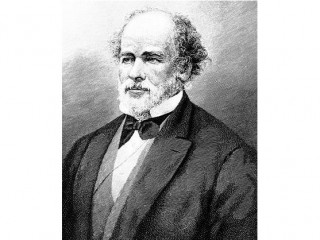
Matthew Fontaine Maury biography
Date of birth : 1806-01-14
Date of death : 1873-02-01
Birthplace : Spotsylvania County, Virginia,U.S.
Nationality : American
Category : Science and Technology
Last modified : 2011-12-19
Credited as : scientist, "Scientist of the Seas", "Father of Modern Oceanography and Naval Meteorology"
2 votes so far
He was nicknamed "Pathfinder of the Seas" and "Father of Modern Oceanography and Naval Meteorology" and later, "Scientist of the Seas," due to the publication of his extensive works in his books, especially Physical Geography of the Sea (1855), the first extensive and comprehensive book on oceanography to be published. Maury made many important new contributions to charting winds and ocean currents, including ocean lanes for passing ships at sea.
As a career Naval officer, Matthew Fontaine Maury developed a uniform methodology for recording ocean winds and currents. His analysis of these patterns allowed shippers to take advantage of air and water flow, decreasing trans-Atlantic travel time by days or even weeks. In his 1855 treatise The Physical Geography of the Seas and Its Meteorology, he wrote, "Our planet is invested with two great oceans; one visible, the other invisible; one underfoot, the other overhead; one entirely envelopes it, the other covers about two thirds of its surface".
His standardized system for logging winds and currents was adopted by navies and merchant marine fleets worldwide, and he also charted the migratory patterns of whales, leading to a much more efficient whale harvest.
Maury resigned his Naval commission at the outbreak of the Civil War, and became Chief of SeaCoast, River and Harbor Defenses for the Confederacy. In this position, he traveled to Europe to obtain ships to strengthen the Southern fleet, and designed an improved contact mine that had some success sinking Northern vessels.
After the war he fled to Mexico and, under appointment by Emperor Maximilian, urged his fellow Southerners to relocate there with their slaves. When that project faltered, he returned to his native state and taught at Virginia Military Institute. He was a pall bearer at the 1870 funeral of Robert E. Lee.
Author of books:
-A New Theoretical and Practical Treatise on Navigation (1836)
-Wind and Current Charts of the North Atlantic (1847)
-The Physical Geography of the Sea and Its Meteorology (1855)
-The World We Live In (1868)
-First Lessons in Geography (1871)
-Steam-Lanes across the Atlantic (1872)
-Physical Geography (1873)
-New Complete Geography (1906, posthumous)
















